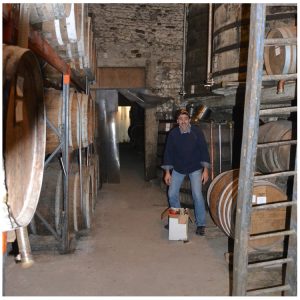Calvados – Apple Brandy – The Forgotten Treasure?
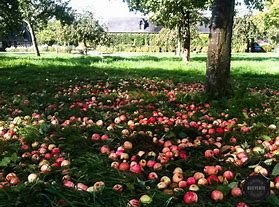 Calvados really is the finest example of apple brandy so it is a mystery that it isn’t more popular. Traditionally rustic, being based on the common old farmyard apple rather than the noble grape, perhaps it is too old fashioned for the influential trendsetters? And what about geography? Normandy is poorer and more rural than the elitist areas of Champagne and Cognac. The region staged countless wars and its fields are the final resting place of thousands of young men. But the trend is gradually changing. New calvados embassies are opening across the world. Indeed, official figures show that in 2017, 57% of the 6m bottles of calvados sold were exported. Its popularity as a cocktail ingredient has certainly helped. One of London’s most stylish and up-and-coming bars, Coupette, puts calvados cocktails at the very heart of its menu. What is a surprise though is that mixologists are using not just calvados from the top cru, Pays D’Auge, but aged and more expensive vintages too. Calvados is a delicious, versatile and refreshing spirit. It goes well with food, tastes good neat, and can be the base for sophisticated cocktails.
Calvados really is the finest example of apple brandy so it is a mystery that it isn’t more popular. Traditionally rustic, being based on the common old farmyard apple rather than the noble grape, perhaps it is too old fashioned for the influential trendsetters? And what about geography? Normandy is poorer and more rural than the elitist areas of Champagne and Cognac. The region staged countless wars and its fields are the final resting place of thousands of young men. But the trend is gradually changing. New calvados embassies are opening across the world. Indeed, official figures show that in 2017, 57% of the 6m bottles of calvados sold were exported. Its popularity as a cocktail ingredient has certainly helped. One of London’s most stylish and up-and-coming bars, Coupette, puts calvados cocktails at the very heart of its menu. What is a surprise though is that mixologists are using not just calvados from the top cru, Pays D’Auge, but aged and more expensive vintages too. Calvados is a delicious, versatile and refreshing spirit. It goes well with food, tastes good neat, and can be the base for sophisticated cocktails.

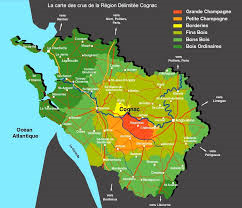 Following the magnificent export results for 2017 -2018, the BNIC agreed a rather high rate of harvest for the production of
Following the magnificent export results for 2017 -2018, the BNIC agreed a rather high rate of harvest for the production of 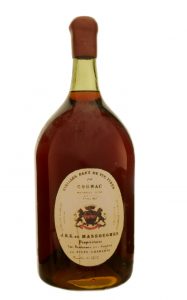
 We are very pleased to introduce our new Office Manager, John Walley. After a full Army career and a spell working in the Far East, he has chosen to settle in Wiltshire and join our team. A keen sportsman, John is already enjoying the wonderful golf courses and premiership rugby this area has to offer. Pictured on his introductory tour of the
We are very pleased to introduce our new Office Manager, John Walley. After a full Army career and a spell working in the Far East, he has chosen to settle in Wiltshire and join our team. A keen sportsman, John is already enjoying the wonderful golf courses and premiership rugby this area has to offer. Pictured on his introductory tour of the 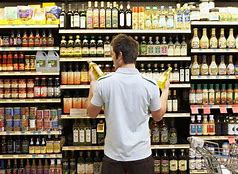 William Grant & Son’s latest Market Report has identified a change in customer behaviour. The new ‘Active-ist Consumer’ is described as ‘purposeful, connected and empowered’. According to the Report there is a new breed of digitally-sophisticated, socially-conscious, and sustainability-expectant people who use their collective consumer power to generate change at scale and with purpose and at an increasingly fast pace. Digital sophistication allows consumers to source their own news, leading to demands for brand transparency and the desire for brands to engage with ethical issues. Such behaviour was clearly visible following the airing of Planet Earth 2 in 2016 when social media was flooded with commentary on the horror of disposable plastic. The sheer number of outraged viewers ensured the issue was recognised by the drinks industry amongst others. As a direct consequence, we are now seeing widespread withdrawal of plastic drinking straws. The Report also announced that people are spending more on drinking less. Consumers are choosing their outings on the quality and range of food and drink on offer. We have been familiar with this trend for some time as
William Grant & Son’s latest Market Report has identified a change in customer behaviour. The new ‘Active-ist Consumer’ is described as ‘purposeful, connected and empowered’. According to the Report there is a new breed of digitally-sophisticated, socially-conscious, and sustainability-expectant people who use their collective consumer power to generate change at scale and with purpose and at an increasingly fast pace. Digital sophistication allows consumers to source their own news, leading to demands for brand transparency and the desire for brands to engage with ethical issues. Such behaviour was clearly visible following the airing of Planet Earth 2 in 2016 when social media was flooded with commentary on the horror of disposable plastic. The sheer number of outraged viewers ensured the issue was recognised by the drinks industry amongst others. As a direct consequence, we are now seeing widespread withdrawal of plastic drinking straws. The Report also announced that people are spending more on drinking less. Consumers are choosing their outings on the quality and range of food and drink on offer. We have been familiar with this trend for some time as 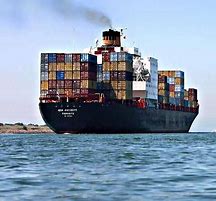 For the fourth consecutive year
For the fourth consecutive year 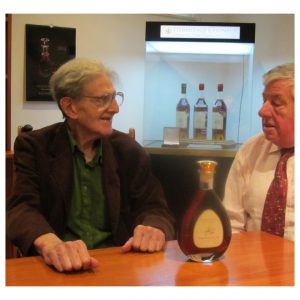 It would be difficult for me to write another
It would be difficult for me to write another 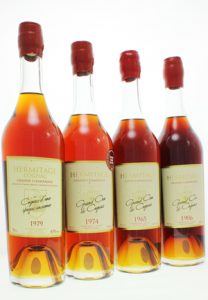 Here at Brandyclassics we specialise in finding the very best cognacs available to sell under our own label, Hermitage. We painstakingly search out those hidden gems, that have been ageing in cellars since the year they were made, for our customers to enjoy. Sometimes only a barrel or two are available and when they are empty, the last drop of the vintage has gone.
Here at Brandyclassics we specialise in finding the very best cognacs available to sell under our own label, Hermitage. We painstakingly search out those hidden gems, that have been ageing in cellars since the year they were made, for our customers to enjoy. Sometimes only a barrel or two are available and when they are empty, the last drop of the vintage has gone.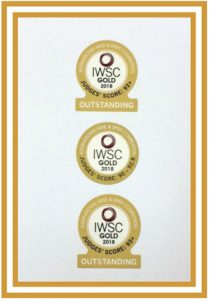 Another fantastic result for the Hermitage stable as three of our newest additions are awarded prestigious medals at this year’s International Wine and Spirits Competition (IWSC 2018). GOLD OUTSTANDING Medals were received by our latest vintages:
Another fantastic result for the Hermitage stable as three of our newest additions are awarded prestigious medals at this year’s International Wine and Spirits Competition (IWSC 2018). GOLD OUTSTANDING Medals were received by our latest vintages: